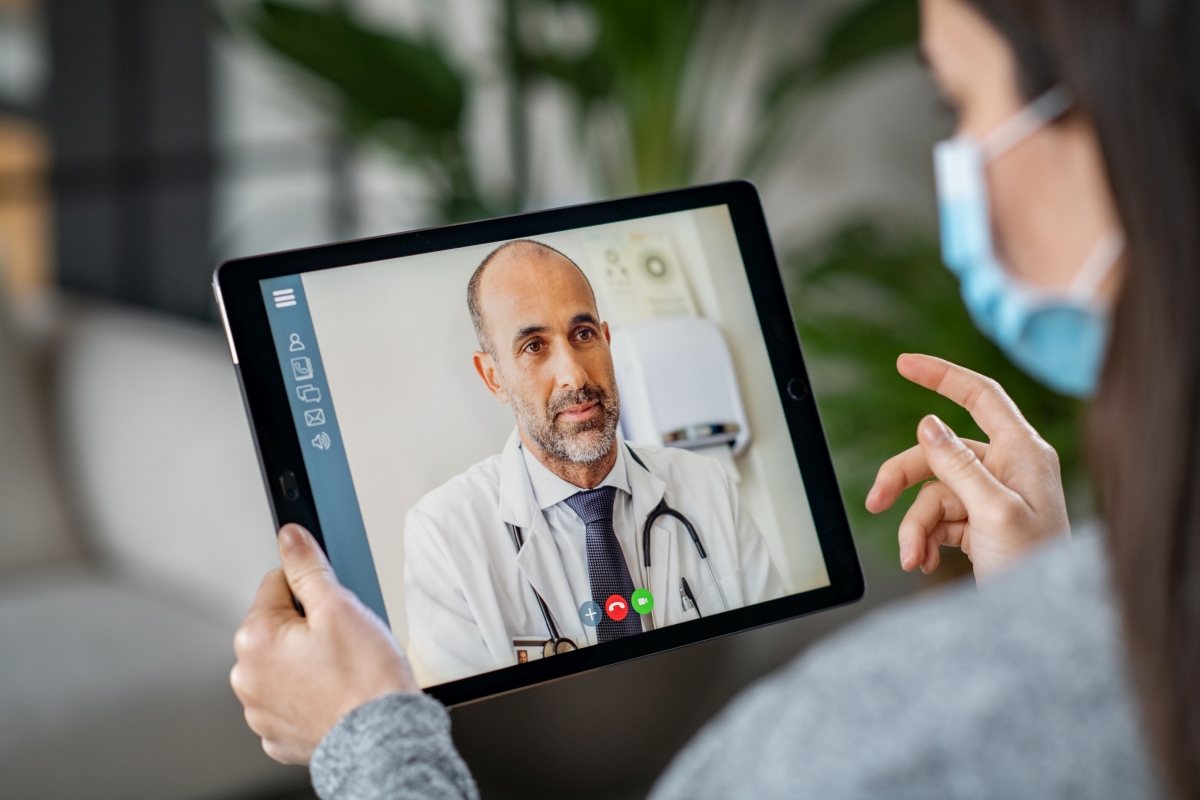Teledoctors: Connecting the Void Between Clients and Doctor
The introduction of teledoctors stands for a considerable shift in the health care landscape, supplying solutions to long-lasting accessibility concerns encountered by patients and companies alike. By incorporating telemedicine into standard techniques, health care systems can reach remote and underserved populations, offering crucial medical examinations without the obstacles of range and traveling. This standard change not only enhances individual involvement yet likewise maximizes resource allocation for providers. However, the extensive fostering of teledoctors elevates essential inquiries about the sustainability of such methods and the implications for future health care delivery. What difficulties lie in advance in guaranteeing this version's efficiency and equity?
Surge of Telemedicine

The increase of telemedicine is also fueled by the need for cost-effective healthcare. Medical care systems around the world are under pressure to minimize expenses while preserving top quality care, and telemedicine supplies a viable option. By minimizing the need for physical gos to, telemedicine lowers overhanging prices for health care centers and eventually lowers the monetary worry on people.
In Addition, the COVID-19 pandemic worked as a driver, increasing the adoption of telemedicine methods. Social distancing actions and the need to reduce exposure threat required a shift towards remote examinations, triggering regulatory bodies to adapt and sustain telehealth services. This shift has not just tested telemedicine's efficacy but also its possible to progress as a staple part of contemporary medical care systems.
Advantages for People
Mainly, telemedicine improves ease of access, enabling clients in underserved or remote areas to seek advice from medical care suppliers without the need for comprehensive travel. Telemedicine likewise uses people the benefit of getting medical guidance and treatment from the convenience of their homes, decreasing the time and price associated with taking a trip to a health care center.
Additionally, telemedicine sustains connection of treatment by helping with normal follow-ups and surveillance, which are vital for managing chronic problems. People can conveniently schedule consultations and gain access to healthcare solutions outside conventional workplace hours, suiting their hectic lifestyles. This versatility causes enhanced individual involvement and adherence to therapy strategies, potentially leading to better health outcomes.
Additionally, telemedicine can help mitigate the risk of infection transmission, a worry increased by the COVID-19 pandemic. By lessening the requirement for in-person check outs, people can stay clear of jampacked waiting spaces and reduce direct exposure to contagious health problems. Inevitably, telemedicine encourages people by supplying timely, reliable, and customized medical care solutions.
Advantages for Companies
For healthcare carriers, telemedicine supplies considerable benefits that boost the performance and reach of their method. By leveraging electronic innovation, companies can prolong their solutions to a more comprehensive group, including those in underserved or remote areas. This not just eases geographical barriers but likewise optimizes person retention and purchase by making healthcare much more obtainable.
Another key advantage is the decrease in above expenses. With telemedicine, the need for physical area diminishes, allowing suppliers to minimize property and operational expenditures. In addition, telemedicine assists in better time management by decreasing the demand for travelling and permitting for even more versatile scheduling. This versatility can result in increased client appointments per day, consequently boosting profits possibility.
Telemedicine likewise fosters an extra collective environment for healthcare providers. teledoctors. It allows smooth sharing of individual info amongst specialists, enhancing diagnostic accuracy and therapy results. Additionally, digital systems can incorporate with electronic health records (EHRs), enhancing data click here for more info accuracy and streamlining management jobs
Moreover, telemedicine enhances individual fulfillment, which is important for service provider track record and success. By offering convenient and timely care, companies can boost client commitment and involvement, better reinforcing the provider-patient partnership.
Overcoming Difficulties
While telemedicine provides many advantages for health care service providers, it additionally offers challenges that need mindful consideration. Healthcare suppliers need to adhere to rigid policies like HIPAA to safeguard sensitive info, therefore needing financial see here now investment in protected systems and continuous team training. teledoctors.
One more obstacle is the electronic divide, which can impede accessibility to telemedicine services. Not all clients have equal access to the necessary technology or internet connection, especially those in underserved or rural locations. This difference can aggravate existing medical care inequalities, making it essential for companies to discover different solutions, such as partnerships with neighborhood organizations, to link this gap.
Moreover, there are limitations in carrying out health examinations remotely. Particular conditions need in-person analysis, highlighting the requirement for a hybrid model that integrates telemedicine with conventional brows through. Service providers should browse these obstacles by establishing procedures to recognize when telemedicine is ideal and ensuring seamless transitions between in-person and online care.
Future of Medical Care
The future of health care is poised for a transformative development, driven by the rapid integration of modern technology and innovation. This not only enhances patient convenience yet additionally increases accessibility to healthcare, especially in rural and underserved areas.
Fabricated knowledge (AI) and machine understanding are also set to play critical functions. These modern technologies can examine substantial amounts of data, giving anticipating insights into patient wellness, improving analysis accuracy, and customizing treatment plans. her latest blog AI-driven tools can augment healthcare suppliers' capacities, resulting in more informed decision-making and much better person outcomes.
Additionally, wearable innovation and Web of Clinical Points (IoMT) devices are changing patient engagement and positive health and wellness administration. These tools make it possible for constant health surveillance, enabling very early detection of possible problems and timely treatments.
As these modern technologies continue to development, they assure to create a more efficient, obtainable, and patient-centric medical care system, eventually bridging the gap in between clients and doctor. - teledoctors
Final Thought
Teledoctors are transforming medical care by dramatically boosting access and performance with remote appointments. This improvement sustains clients in underserved locations by supplying timely clinical guidance without needing physical brows through, hence boosting individual engagement and continuity of treatment. Healthcare providers benefit from much more effective time management and boosted cooperation chances. Despite difficulties such as technical obstacles and regulatory problems, the future of medical care appears progressively comprehensive and efficient because of the combination of telemedicine right into traditional care designs.

As telemedicine proceeds to improve medical care delivery, clients stand to obtain dramatically from this improvement. Mostly, telemedicine boosts access, permitting individuals in remote or underserved locations to consult health care companies without the demand for extensive travel. Telemedicine additionally supplies individuals the convenience of getting medical advice and treatment from the comfort of their homes, reducing the time and cost linked with taking a trip to a medical care facility.
Inevitably, telemedicine empowers people by offering timely, efficient, and personalized health care services.